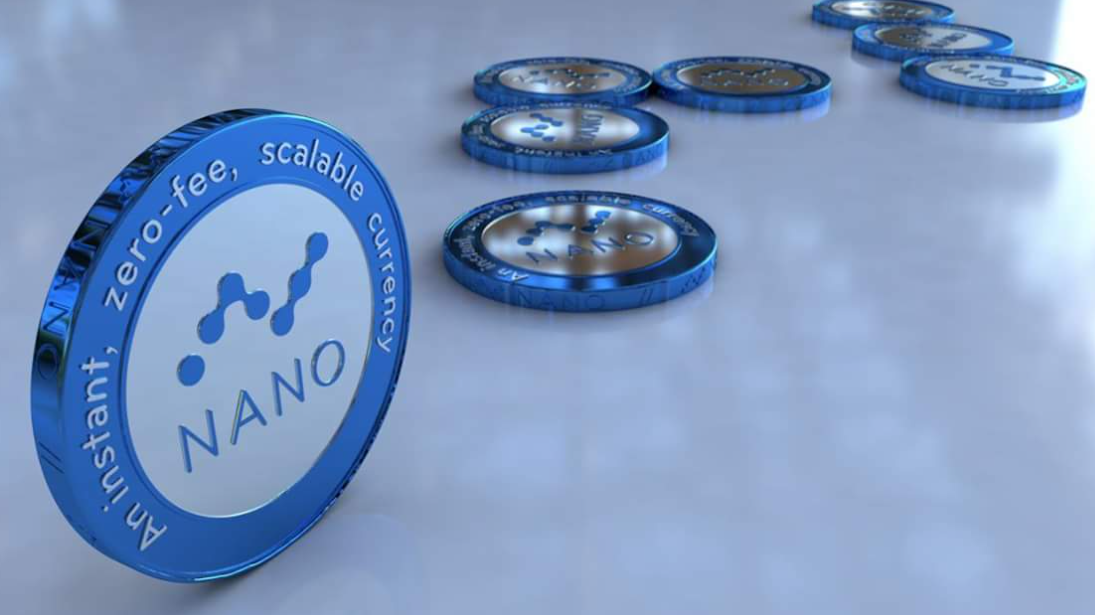What is Nano Coin? Nano Coin is a peer-to-peer, open source cryptocurrency that is built on a distributed ledger and directed acyclic graph data structure. These two features allow Nano to operate without intermediaries. They also make it easy to transfer funds. You can use Nano to make payments, receive and send money, and manage your balances.
Feeless transactions
If you’re interested in the benefits of feeless transactions with Nano Coin, you’ve come to the right place. This cryptocurrency is used in numerous ways, from online gambling to sending messages to friends and family. You can even use Nano to pay for video games, such as Quake. You can also earn Nano currency by playing popular online games like WeNano.
One of the best aspects of using Nano is that it’s completely free to send or receive. This makes it a great option for sending money to anyone, from friends to content creators. It’s also a great way to transfer value internationally. And, unlike traditional banking, nano’s free transactions guarantee that the full value of your transaction will reach your recipient.
Another benefit of Nano is that it’s environmentally friendly. It is not only a great option for those who are concerned about environmental issues, but it can also be a good option for those who don’t have access to a bank or credit card. Nano’s unique technology allows users to send and receive funds instantly, eliminating the need to wait for the entire network to sync up. This makes sending and receiving money much easier, especially for those in lower income brackets.
Nano Coin’s technology uses a delegated proof of stake (DPoS) consensus algorithm. Each account has its own blockchain, and each node can choose a representative node to act on behalf of the account holder. This node will check the signatures and vote to validate the transaction. The process is weighted so that a representative’s vote is proportional to the number of Nano that’s linked to it.
Nano is a feeless digital payment protocol that addresses many of the inefficiencies associated with traditional financial and blockchain systems. Its innovative block-lattice architecture delivers near-instant transaction speed and scalability. And, it allows for aggressive database pruning. As of today, the Nano network has processed 4.2 million transactions, with a total ledger size of 1.7GB.
Unlimited scalability
Unlimited scalability is one of the main benefits of Nano, a cryptocurrency that is based on a block-lattice architecture. The network uses this architecture to enable instant transactions and unlimited scalability. Each account in the network has its own blockchain and private key. This means that users can update the blockchain and account-chain independently. This enables a decentralized peer-to-peer payment system without the need for central authority or centralized services.
The goal of Nano is to be a mainstream cryptocurrency traded on every major exchange, and it will focus on the South American and Asian markets for mass adoption. For this reason, Nano is going to offer region-centric communities with community managers. It will also provide a service to non-English speaking markets.
The DAG technology enables Nano to process thousands of transactions per second and has no fees. This system also eliminates the need for resource-intensive mining to secure the blockchain. Nano was originally known as RaiBlocks, but at the start of 2018 it changed its name to Nano. The new name was chosen in order to increase its user base and promote wider adoption.
Nano offers several major advantages over Bitcoin. It can be used for small and large purchases alike. Unlimited scalability is another key feature. Nano is able to process 1000x more transactions per second than Bitcoin. Moreover, it promises no fees for its users, unlike Bitcoin. For this reason, it is an excellent choice for those who want to pay for everything without paying fees.
Nano Coin offers unlimited scalability and zero transaction fees. These features make it an ideal cryptocurrency for cross-border and B2C payments. Furthermore, it features a blockchain-lattice architecture that allows each account to run its own chain. Consequently, transactions in the network are instantaneous and fast.
The team behind Nano Coin is composed of two individuals who have extensive backgrounds in the industry. One of these individuals is Colin LeMahieu, who focuses on the core protocol. For more information about Nano, visit the website.
Low transaction fees
One of the best things about Nano Coin is the low transaction fees. Unlike other cryptocurrencies, Nano transactions do not incur fees. This is due to the fact that they fit into a single UDP packet. This eliminates block size issues and allows for low transaction fees. Also, once a transaction is complete, Nano wallets automatically pre-cache the anti-spam Proof of Work for the next transaction.
The transaction protocol for Nano is unique. This protocol utilizes a block-lattice structure, in which each account has its own blockchain, or “blockchain.” Each block represents the history of that account, and can only be updated by the account owner. Nano transactions happen instantly, without the need for a third-party. However, if you wish to transfer your Nano Coin to another user, you need to make two transactions: one for the sender and one for the recipient.
Choosing a cryptocurrency exchange is important. Not all exchanges are the same, and some charge more for some cryptocurrencies than others. To find a low-fee cryptocurrency exchange, read the exchange’s website carefully. In addition to determining the lowest transaction fees, you should also take time to research the problem a coin is solving and make sure it’s an excellent choice.
Choosing a cryptocurrency with low transaction fees can be difficult. Since there are so many projects, it can be hard to determine which are the best. However, you should try to invest in a project with the lowest transaction fees possible. This will increase your chances of making a profit. For example, Nano Coin’s transaction fees are lower than those of other cryptocurrencies. You can also consider using Tamadoge as a way to earn cryptocurrency without paying transaction fees.
Another great feature of Nano Coin is the low latency. Unlike many cryptocurrencies, Nano requires only a few resources to process a transaction, making it ideal for peer-to-peer payments. Because it does not need centralized infrastructure, Nano can handle thousands of transactions per second. In addition, it can be run on low-power hardware.
Open representative voting
Open representative voting (ORV) is a key design feature of the Nano Consensus Protocol. It allows members of the network to choose who will represent their interests. The representative acts similar to a validator in Casper and has voting power proportional to the total balance of the account. If a user wants to change the representative, he or she can do so anytime.
The Open Representative Voting mechanism of Nano is designed to prevent double spending and Sybil attacks. It works by allowing users to select representative nodes that process transactions. When sufficient representative votes are achieved, every node in the network independently cements a transaction. This ensures that each transaction is verified within a short amount of time, usually less than one second.
However, Nano has a major problem with its centralized nature. Although it uses an off-chain governance protocol, its major governing entities are core developers and large stakeholders. These stakeholders have the most skin in the game and have the most to gain from the success of the platform. Additionally, the platform uses a developer fund, which is not ideal for decentralization.
Open representative voting is an energy-efficient way to confirm blocks and ensure that transactions are carried out according to the rules. To become a principal representative, a Nano account must have 0.1% of its online voting weight delegated to it. The votes of these representatives are then broadcasted by other Nano nodes, which helps the network reach consensus more quickly.
Nano uses a system called Proof of Work to avoid spammers. In order to process transactions in the Nano network, these nodes have to devote significant computing power. This method prunes spam transactions and saves storage space. It also reduces the overall transaction costs of Nano. It is an ideal solution for micro-transactions.
Although open representative voting may appear to be beneficial in the initial stage, it will likely be a bottleneck as it grows more popular. It may also be unworkable in the long run, because the Nano Consensus Protocol requires one representative for every fork case.




